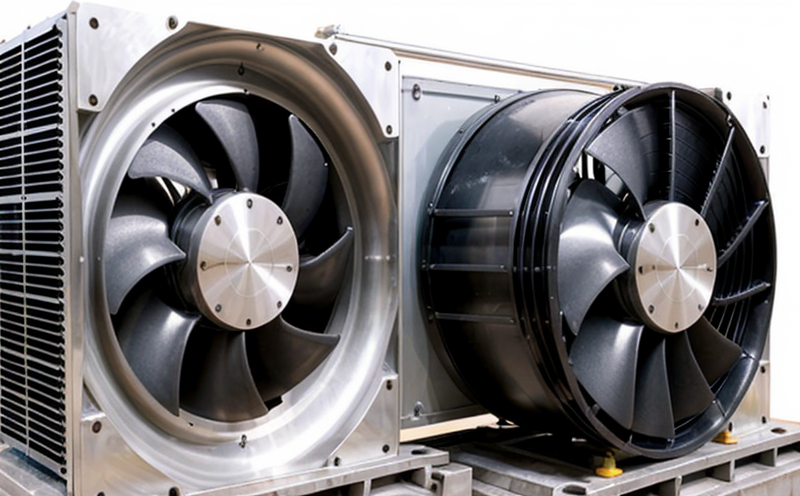Effect of cooling rates on mechanical properties
The Crucial Role of Cooling Rates in Determining Mechanical Properties How Eurolab Can Help
As manufacturers and researchers continue to push the boundaries of materials science, the importance of understanding the effects of cooling rates on mechanical properties cannot be overstated. In the world of metallurgy, ceramics, and polymers, the way a material cools can have a profound impact on its final composition, structure, and performance. At Eurolab, our team of experts specializes in providing laboratory services that help businesses optimize their processes and products by analyzing the effect of cooling rates on mechanical properties.
In this article, we will delve into the significance of cooling rates, explore the advantages of using Effect of Cooling Rates on Mechanical Properties (ECRMP) as a service, and provide you with a comprehensive overview of what to expect from our laboratory services. Whether youre a materials scientist, engineer, or production manager, understanding the impact of cooling rates is crucial for developing high-performance products that meet your industrys demands.
What are Cooling Rates and Why Do They Matter?
Cooling rates refer to the speed at which a material cools after it has been heated or processed. This process can occur through various methods, including air cooling, water quenching, or even rapid cooling techniques like cryogenic treatment. The cooling rate can significantly affect the microstructure, phase transformations, and grain growth of materials, ultimately influencing their mechanical properties.
In many industries, such as aerospace, automotive, and energy, materials with specific mechanical properties are required to ensure safety, efficiency, and reliability. For instance
In aircraft construction, high-strength-to-weight ratios are essential for reducing fuel consumption and improving structural integrity.
In automotive manufacturing, researchers seek to develop materials that can withstand extreme temperatures, vibrations, and impact loads.
In the energy sector, advanced materials with enhanced thermal conductivity or radiation resistance are crucial for next-generation power generation systems.
Advantages of Using Effect of Cooling Rates on Mechanical Properties (ECRMP)
Our ECRMP service at Eurolab offers a range of benefits to businesses looking to optimize their products and processes. Some of the key advantages include
Improved Material Performance By optimizing cooling rates, you can enhance material properties such as strength, toughness, corrosion resistance, and thermal conductivity.
Enhanced Product Reliability Understanding the effects of cooling rates on mechanical properties helps ensure that your final product meets industry standards and performs consistently in various environmental conditions.
Increased Efficiency Streamline your production processes by selecting the most suitable cooling rate for your specific material and application.
Cost Savings Optimize your cooling strategies to reduce energy consumption, minimize waste, and decrease costs associated with rework or scrap materials.
Some of the key benefits of our ECRMP service are
Customized Cooling Strategies Our team will work closely with you to develop tailored cooling plans that meet your specific needs.
Material Selection Optimization Well help you choose the best material for your application based on its mechanical properties and cooling rate requirements.
Process Development and Scale-Up Our expertise in ECRMP can inform process development, ensuring smooth scale-up from laboratory to production environments.
The Eurolab Advantage
At Eurolab, our commitment to delivering high-quality services is matched only by our passion for innovation. Here are some reasons why were the trusted partner for businesses seeking expert analysis and advice
State-of-the-Art Equipment Our laboratories are equipped with cutting-edge instrumentation, ensuring accurate and reliable results.
Experienced Team Our experts have extensive knowledge in materials science, mechanical engineering, and laboratory operations.
Customized Services We offer flexible packages tailored to your specific needs, including routine testing, research collaborations, and process development support.
QA Frequently Asked Questions about Effect of Cooling Rates on Mechanical Properties
What are the typical cooling rates used in industrial processes?
Cooling rates vary widely depending on the application, material type, and desired properties. Some common rates include
Air cooling (slow to moderate)
Water quenching (rapid)
Cryogenic treatment (extremely rapid)
Can I use Eurolabs ECRMP service for materials other than metals?
Yes! Our expertise extends beyond metallurgy, encompassing ceramics, polymers, and composites.
How do I select the most suitable cooling rate for my material?
Well work with you to determine the optimal cooling strategy based on your specific application, material properties, and desired outcomes.
Conclusion
The effect of cooling rates on mechanical properties is a critical aspect of materials science that can significantly impact product performance, reliability, and efficiency. At Eurolab, our team is dedicated to providing expert analysis, advice, and customized services that help businesses like yours optimize their products and processes.
Dont let the nuances of cooling rates hinder your innovation. Contact us today to learn more about how our ECRMP service can elevate your product development and production capabilities.
Ready to Explore Further?
Browse our website for more information on our laboratory services, including Effect of Cooling Rates on Mechanical Properties (ECRMP). Dont hesitate to reach out if you have any questions or would like to discuss a specific project. Together, lets unlock the full potential of your materials and take your business to new heights!




